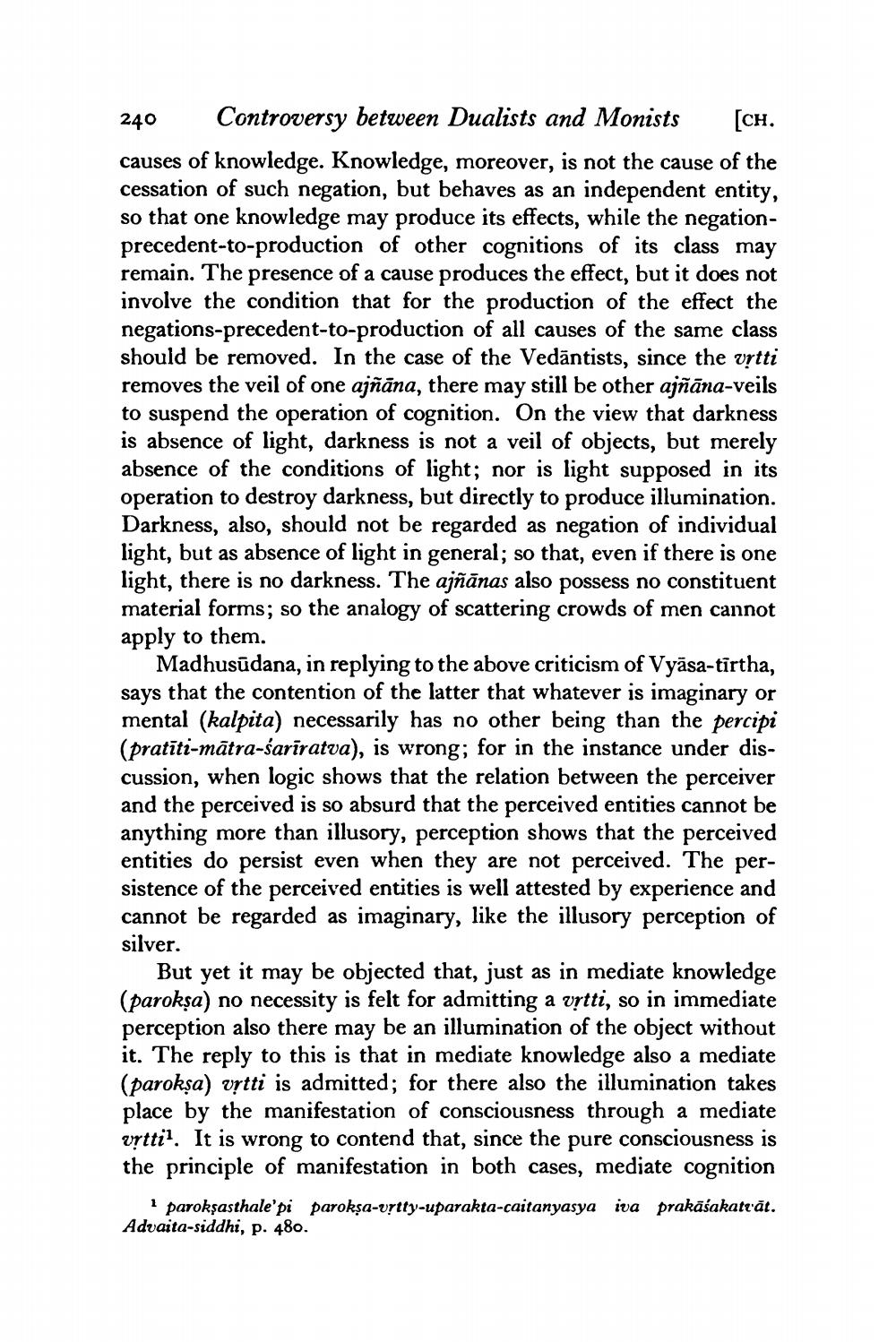________________
240 Controversy between Dualists and Monists [CH. causes of knowledge. Knowledge, moreover, is not the cause of the cessation of such negation, but behaves as an independent entity, so that one knowledge may produce its effects, while the negationprecedent-to-production of other cognitions of its class may remain. The presence of a cause produces the effect, but it does not involve the condition that for the production of the effect the negations-precedent-to-production of all causes of the same class should be removed. In the case of the Vedāntists, since the vrtti removes the veil of one ajñāna, there may still be other ajñāna-veils to suspend the operation of cognition. On the view that darkness is absence of light, darkness is not a veil of objects, but merely absence of the conditions of light; nor is light supposed in its operation to destroy darkness, but directly to produce illumination. Darkness, also, should not be regarded as negation of individual light, but as absence of light in general; so that, even if there is one light, there is no darkness. The ajñānas also possess no constituent material forms; so the analogy of scattering crowds of men cannot apply to them.
Madhusūdana, in replying to the above criticism of Vyāsa-tīrtha, says that the contention of the latter that whatever is imaginary or mental (kalpita) necessarily has no other being than the percipi (pratīti-mātra-śarīratva), is wrong; for in the instance under discussion, when logic shows that the relation between the perceiver and the perceived is so absurd that the perceived entities cannot be anything more than illusory, perception shows that the perceived entities do persist even when they are not perceived. The persistence of the perceived entities is well attested by experience and cannot be regarded as imaginary, like the illusory perception of silver.
But yet it may be objected that, just as in mediate knowledge (parokşa) no necessity is felt for admitting a vrtti, so in immediate perception also there may be an illumination of the object without it. The reply to this is that in mediate knowledge also a mediate (parokşa) vrtti is admitted; for there also the illumination takes place by the manifestation of consciousness through a mediate vrtti?. It is wrong to contend that, since the pure consciousness is the principle of manifestation in both cases, mediate cognition
parokşasthale'pi parokşa-vrtty-uparakta-caitanyasya iva prakāśakatrāt. Advaita-siddhi, p. 480.




